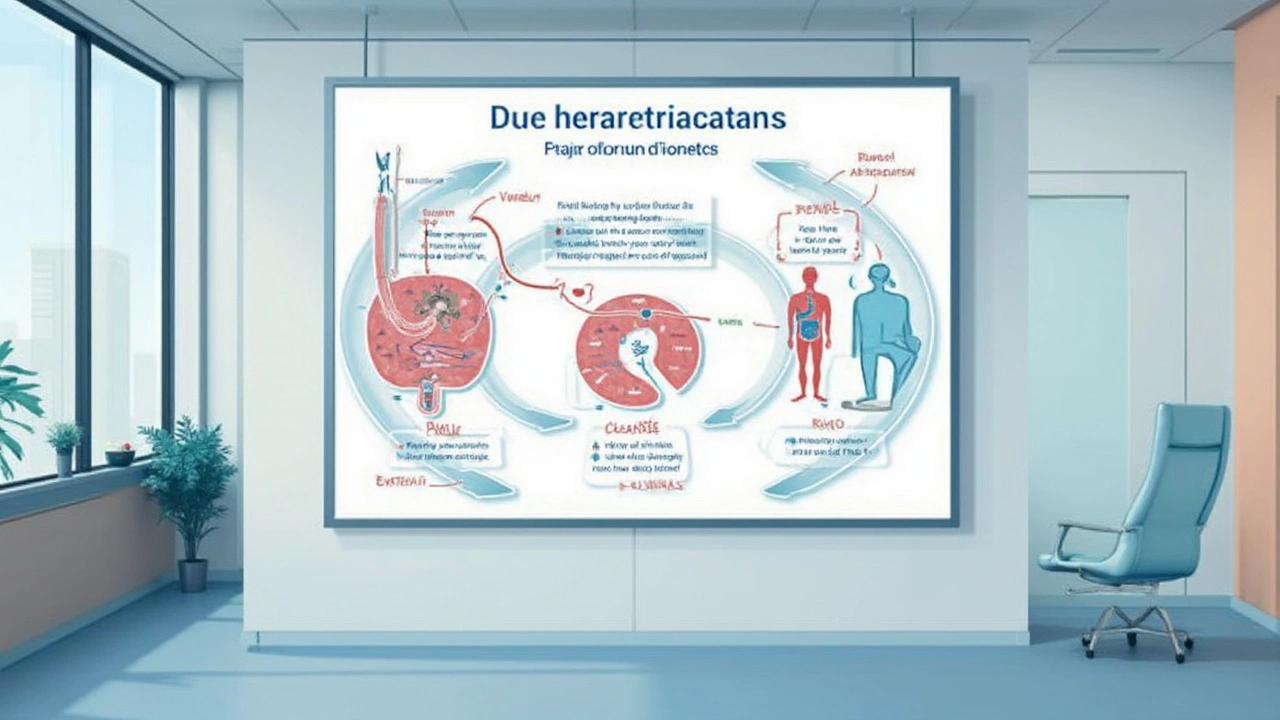This article takes a practical, in-depth look at the pharmacokinetics of levetiracetam, focusing on its absorption, metabolism, and renal clearance. It highlights real-world facts and tips clinicians should know to avoid dosing errors or complications. The discussion breaks down how levetiracetam behaves in different patients—from healthy adults to those with kidney disease. Expect useful monitoring tips and interesting findings about this staple anti-seizure medication.
Renal clearance: quick, practical guide for meds and kidneys
Renal clearance tells you how fast the kidneys remove a drug from the blood. It matters because many medicines depend on kidneys to leave the body. If the kidneys slow down, drugs can build up and cause harm. Knowing renal clearance helps adjust doses safely and prevent side effects.
Start by checking kidney function numbers your doctor or pharmacist uses. Creatinine clearance (CrCl) estimated by Cockcroft‑Gault and estimated glomerular filtration rate (eGFR) are the two common measures. CrCl is often used for drug dosing in older studies and drug labels. eGFR is reported by labs and is great for tracking kidney disease, but it sometimes overestimates drug clearance in people with low muscle mass. When in doubt, ask your prescriber which number to use.
Practical steps for prescribers and patients:
Which drugs need attention? Think small, water‑soluble medicines and ones removed unchanged by the kidney. Examples: aminoglycoside antibiotics, vancomycin, lithium, gabapentin, pregabalin, many antivirals, and some oral diabetes drugs. For these, dosing often changes as CrCl or eGFR drops. Some drugs require lower doses, others require longer intervals between doses. Drug labels and clinical dosing guides list specific cutoffs and adjustments.
- Before starting a drug cleared by the kidney, get a recent serum creatinine and the lab’s eGFR.
- If the patient is elderly or has changed weight, consider calculating CrCl with Cockcroft‑Gault.
- Use dosing references like Micromedex, Lexicomp, or FDA labels for exact dose changes. Many free resources online give adjustment tables too.
- For drugs with narrow therapeutic windows (vancomycin, aminoglycosides, lithium), monitor drug levels and symptoms, and repeat labs after dose changes.
- If the patient is on dialysis, ask which type and schedule. Some drugs are removed by dialysis and need supplemental doses after sessions.
Common mistakes to avoid:
Watch for signs of accumulation: increased side effects, sudden sedation, confusion, shaking, or changes in appetite. These can signal high drug levels that need quick reassessment.
Common mistakes to avoid:
- Relying only on eGFR for dosing when the drug guideline specifies CrCl.
- Forgetting weight and age in calculations for elderly or lightweight patients.
- Ignoring renal function changes during acute illness, dehydration, or after starting an interacting drug like an ACE inhibitor.
If you are a patient:
- Keep an up‑to‑date list of your medicines and your latest kidney numbers.
- Tell your pharmacist about any kidney disease, recent lab results, or dialysis.
- Ask whether dose adjustments are needed when starting new medicines or supplements.
Use this tag page to find articles that touch on drug dosing, monitoring, and specific medicines affected by renal clearance. If something sounds unclear, bring your medication list and lab results to your next visit and ask for a dosing review.
Simple tools can help: phone apps that calculate CrCl, hospital calculators, and quick reference cards in clinics. Pharmacists often run checks when you pick up prescriptions — let them. If you have complex meds or kidney disease, ask for a pharmacist or nephrology consult to review doses and labs regularly, often.

